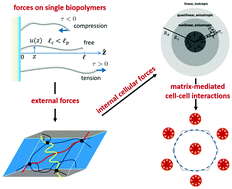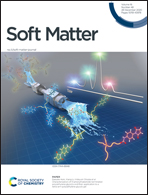Continuum elastic models for force transmission in biopolymer gels
Abstract
We review continuum elastic models for the transmission of both external forces and internal active cellular forces in biopolymer gels, and relate them to recent experiments. Rather than being exhaustive, we focus on continuum elastic models for small affine deformations and intend to provide a systematic continuum method and some analytical perspectives on the study of force transmission in biopolymer gels. We start from a very brief review of the nonlinear mechanics of individual biopolymers and a summary of constitutive models for the nonlinear elasticity of biopolymer gels. We next show that the simple 3-chain model can give predictions that fit well the shear experiments of some biopolymer gels, including the effects of strain-stiffening and negative normal stress. We then review continuum models for the transmission of internal active forces that are induced by a spherically contracting cell embedded in a three-dimensional biopolymer gel. Various scaling regimes for the decay of cell-induced displacements are identified for linear isotropic and anisotropic materials, and for biopolymer gels with nonlinear compressive-softening and strain-stiffening elasticity, respectively. After that, we present (using an energetic approach) the generic and unified continuum theory proposed in [D. Ben-Yaakov et al., Soft Matter, 2015, 11, 1412] about how the transmission of forces in the biogel matrix can mediate long-range interactions between cells with mechanical homeostasis. We show the predictions of the theory in a special hexagonal multicellular array, and relate them to recent experiments. Finally, we conclude this paper with comments on the limitations and outlook of continuum modeling, and highlight the need for complementary theoretical approaches, such as discrete network simulations, to force transmission in biopolymer gels and phenomenological active gel theories for multicellular systems.



 Please wait while we load your content...
Please wait while we load your content...